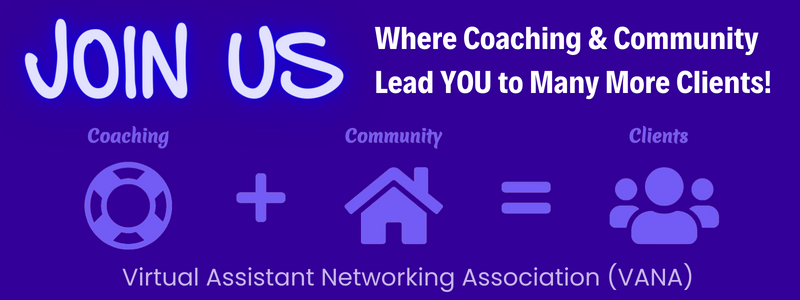Holiday Burnout? Try These 5 Balance-Boosting Tips
Holiday Burnout? Try These 5 Balance-Boosting Tips

The holiday season shows up sparkling, festive, and full of magic — but it also shows up with invoices to send, clients needing last-minute updates, year-end bookkeeping, school events, travel plans, and somehow… a cookie exchange you definitely don’t remember agreeing to.
And if you’re a small business owner, accountant, realtor, or solo entrepreneur?
December doesn’t just show up — it moves in, takes over the guest room, and asks where the hot cocoa is.
Here’s the thing: You deserve a December that feels meaningful, not miserable. A month where you can close out the year with confidence and still say yes to the holiday moments that matter. The trick is to create a balance — one that lets you stay productive without burning yourself to a crisp, like the cookies you forgot were in the oven.
So grab your venti six-shot peppermint mocha latte (zero judgment here), and let’s dig into five practical, doable tips you can use to wrap up the year without sacrificing your sanity.

December is not the time to reinvent your entire business or take on projects with the energy of July. This is a month for clarity, kindness (to yourself!), and simplicity.
And yet, every year I watch business owners — especially us high-achieving types — try to do everything they didn’t get to earlier in the year… in December. That’s how burnout sneaks in, wearing jingle bells.
Instead, create what I call your Bare Minimum December Plan.
Here’s how it works:
- List every task you think you need to do this month.
- Circle only the truly non-negotiable ones.
- Everything else?
- Delay to January
- Delegate
- Delete entirely (yes, you have permission)
Your Bare Minimum Plan becomes your North Star
It also becomes your boundary anchor — because if a new request doesn’t fit your December bandwidth? It’s a “no,” a “not right now,” or a “circle back in January.”
Why this reduces burnout:
It keeps your brain from juggling 42 things at once. Instead, you stay focused on the 7–10 items that genuinely matter. When your expectations settle, stress settles right along with them.

This one often surprises people, but it works:
Put your personal plans on your calendar before your business tasks.
- If your family has a cookie-baking day… block it.
- If your daughter’s piano recital is on the 19th… block it.
- If you want a quiet morning with coffee on Christmas Eve… block it.
When you treat personal time like it actually matters, something magical happens:
- You stop overbooking yourself
- You protect your energy
- You avoid that awful “I’m missing everything because of work” guilt
- Your business tasks naturally expand or contract to fit the time you have
This is the same method I teach my own clients — because you can always find another hour for work, but you can’t get back missed memories.
Pro Tip:
Color-code your calendar so your holiday downtime stands out like little pockets of joy.

One of the biggest December energy drains is switching between tasks nonstop.
Invoices → gift buying → client follow-ups → shipping → bookkeeping → content… It’s exhausting.
Instead, try batching, a technique that reduces mental friction and helps you get more done in less time.
- Batch ideas for small business owners:
- Client updates: Do them all in one session
- Invoices: One batching block
- Content scheduling: One afternoon → your December social posts are done
- Shipping & gifts: Make a list → handle everything in one trip or one online session
- Bookkeeping: One weekly or bi-weekly batch session until year-end
The more you streamline, the more time you regain. This is where delegation also becomes your secret weapon. (Yes, that’s your cue to hand off something — anything — to a Virtual Assistant.)

December is the one month of the year when both automations and virtual assistants shine like holiday lights.
- Easy automations you can set up in less than an hour:
- Email autoresponders
- Holiday hours on your website
- Social media scheduling (Facebook/Instagram scheduling tools work great)
- Recurring invoices
- Calendar booking rules for year-end
Automation = peace of mind when your inbox inevitably starts filling with holiday greetings and last-minute client requests.
But here’s the part many business owners forget: You don’t have to be the one doing everything.
A virtual assistant can help with:
- End-of-year admin
- Inbox cleanup
- Client outreach
- Data entry
- Social media scheduling
- Filing, categorizing, or preparing your Q1 tasks
A good VA saves you time. A great VA gives you your December back.

Let’s talk “Silent Spaces.”
Silent Spaces are intentional pockets of time where…You do absolutely nothing.
You sit.
You breathe.
You sip a warm drink.
You stare at your decorated tree and do not feel guilty about it.
Most business owners spend December sprinting from one thing to the next, telling themselves they’ll rest “later.”
But real rest doesn’t magically happen — you have to create space for it.
Try adding Silent Spaces like:
- 10 minutes before you open your laptop
- 15 minutes after lunch
- A no-meeting Friday
- A quiet evening ritual with no screens
When you protect whitespace, you protect your energy. And when your energy is protected, burnout doesn’t stand a chance.
🎁 THE REAL SECRET TO A BALANCED DECEMBER
It’s not about doing everything - It’s about doing what matters — with enough breathing room to enjoy the season.
If you can shift from survival mode to intentional mode, December transforms from overwhelming… to meaningful.
And the best part? You get to start January with clarity instead of exhaustion.
BOOK TIME WITH ME
If your December task list is already overflowing or you’re craving support as you close out the year, I’d love to help.
Let’s take a few things off your plate so you can enjoy the season (and avoid burnout).
Let’s make the end of your year a little lighter — and a lot more joyful.
Holiday Burnout? Try These 5 Balance-Boosting Tips Read More »




















